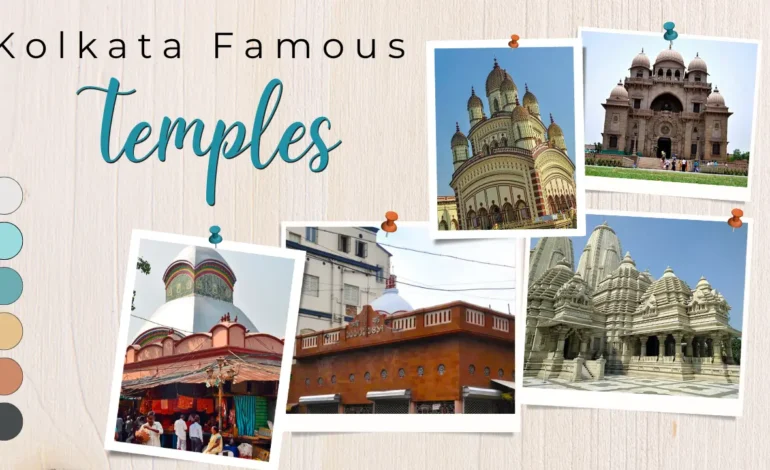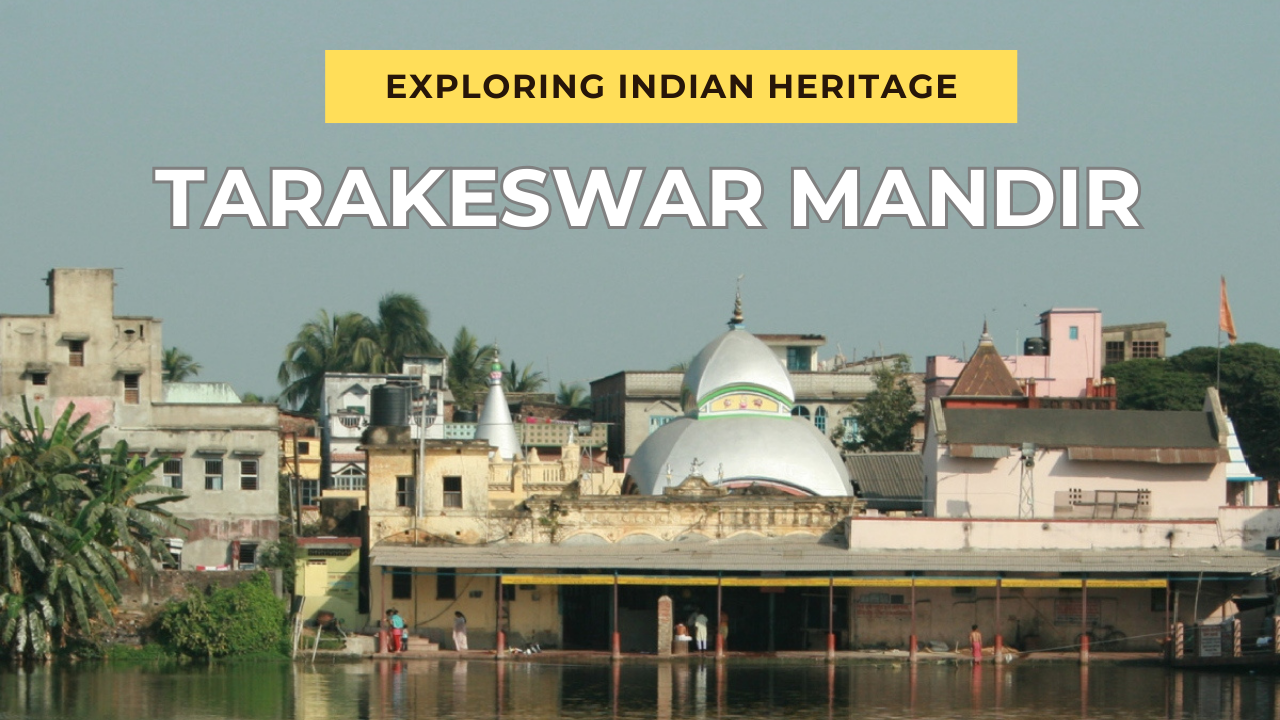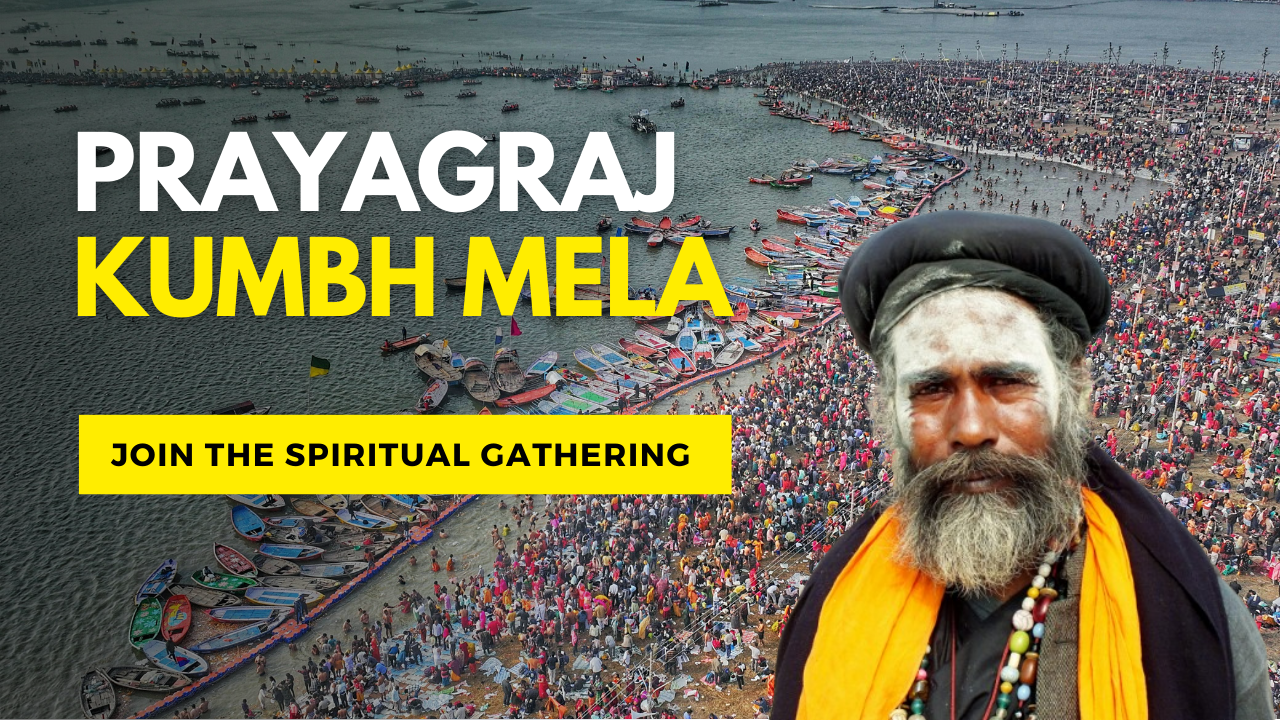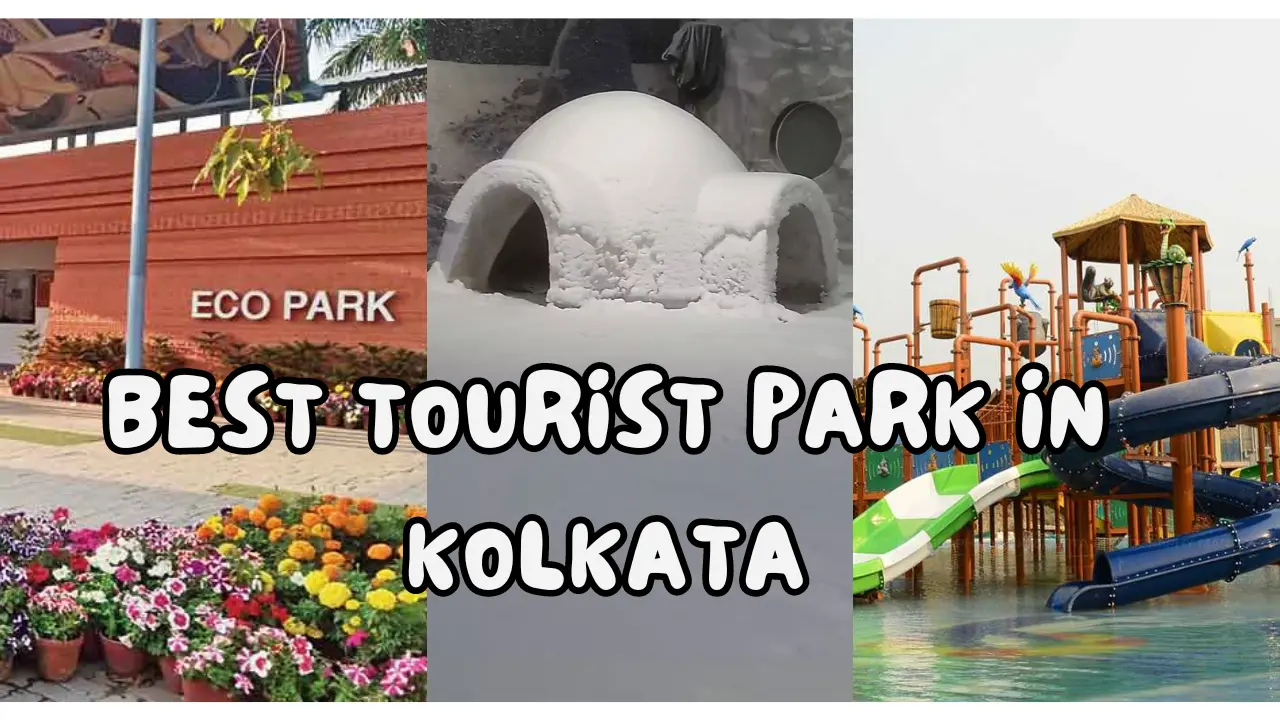
Top 5 Kolkata Tourist Places: Explore the Best Attractions
Table of Contents
ToggleKolkata Tourist Places: About Our KOLKATA
Historically, Kolkata originated from three villages—Sutanuti, Dihi Calcutta, and Gobindpur—governed by the Nawabs of Bengal under Mughal rule until the late 17th century. In 1690, the British East India Company secured trade charters from the Nawab, establishing a fortified trading post in Calcutta. The city endured fluctuations in governance, notably falling under Nawab Sirajuddaula’s control in 1756 but reverting to British hands the subsequent year.
By the late 18th century, the East India Company solidified its authority over Bengal, eventually assuming full sovereignty in 1793 by abolishing local governance (Nizamat). During the British colonial era, Calcutta served as a paramount center for education, scientific advancement, and socio-political activism. Post-independence, Kolkata transitioned into a focal point of state politics within West Bengal, although it contended with economic stagnation following the colonial period.
The etymology of “Calcutta” or “Kolkata” remains subject to scholarly debate. Some propose derivations from “Kalikshetra” (a field of the Hindu goddess Kali) or “Kalighat” (a ghat dedicated to Kali), while others suggest associations with “Kilkila” (a flat area) or local commodities like Kalichun and Kata (coconut husk).
The city’s name underwent a formal change to “Kolkata” in 2001, aligning with Bengali pronunciation conventions and reflecting the linguistic shift in English nomenclature.
Top 5 Kolkata Tourist Places
1. Victoria Memorial
The Victoria Memorial, an expansive marble monument situated on the Maidan in Central Kolkata with its entrance on Queen’s Way, was constructed between 1906 and 1921 under the auspices of the Government of India. This grand structure pays homage to Queen Victoria, who reigned as Empress of India from 1876 to 1901.
Notably, the Victoria Memorial holds the distinction of being the largest monument dedicated to a monarch globally, encompassing 64 acres of meticulously landscaped gardens. Presently, it functions as a museum overseen by the Ministry of Culture, Government of India. The architectural style of the memorial prominently showcases Indo-Saracenic influences, making it a premier tourist destination within the city.
Historian Durba Ghosh explains that the Viceroy of India, Lord Curzon, had conceived plans for a history museum, which later evolved into the Victoria Memorial Hall, even before Queen Victoria’s death in 1901. In an address to the Asiatic Society, Curzon revealed his longstanding intention to establish such a historical institution, viewing Victoria’s passing as an opportune moment to commemorate the empire.
Following Queen Victoria’s demise on January 22, 1901, Curzon corresponded with Lord George Hamilton, the Secretary of State for India, on January 24, emphasizing the significance of Victoria’s reign in fostering loyalist sentiments. He proposed the erection of a magnificent edifice encompassing a museum and gardens. Curzon reiterated these plans during his address to the Asiatic Society on February 26, 1901.
The chosen site for the Victoria Memorial was adjacent to the present-day Raj Bhavan, formerly Government House. However, construction was delayed due to Curzon’s departure from India in 1905, resulting in diminished local enthusiasm for the project. Concerns about the foundation’s stability prompted rigorous testing. Finally, on January 4, 1906, the foundation stone was laid by George, the Prince of Wales.
Subsequent to India’s independence in 1947, several modifications and additions were made to the Victoria Memorial.
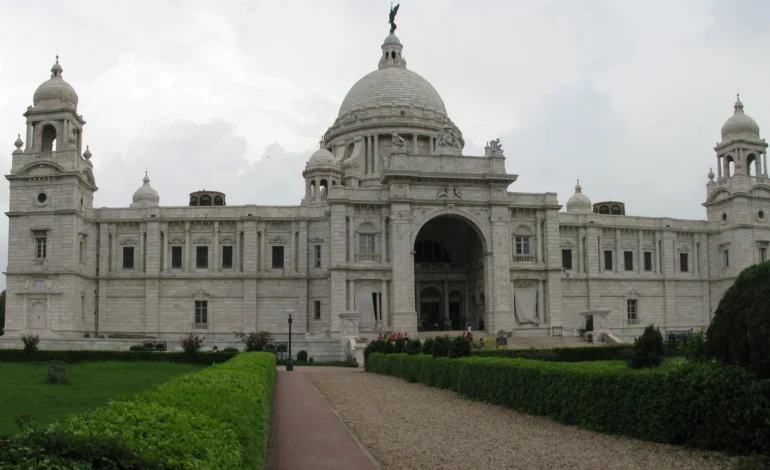
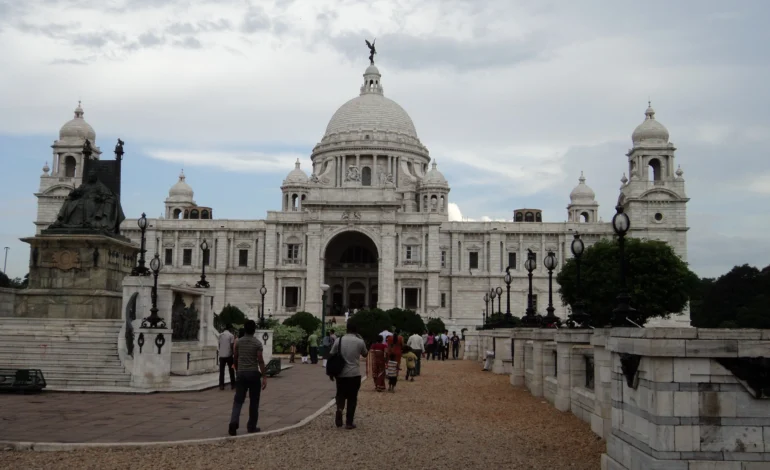
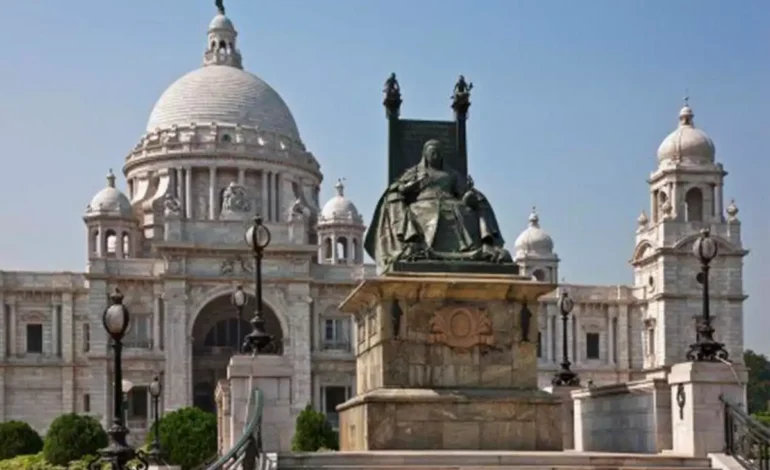
Victoria Memorial Gallery Kolkata Entry Fee
- ₹ 20 per person for Indians
- ₹ 200 per person for Foreign Tourists
- ₹ 0 Free entry for school children up to Class XII in uniform and Army personnel in uniform
Time
- Monday Close
- Tuesday to Sunday 10:00 am – 5:00 pm
Victoria Memorial Garden Area Kolkata Entry Fee
- ₹ 10 per person per entry (Daily ticket)
- ₹ 100 per person for Garden Entry (Monthly ticket)
- ₹ 1000 per person for Garden Entry (Yearly ticket)
- ₹ 2000 per person for Morning Walkers
- ₹ 1000 per person for Morning Walkers (Senior citizens)
Time
- Monday to Sunday 5:30 am – 6:15 pm (Gardens)
Light & Sound Show Timings:
October to February:
- 6.15 p.m. to 7.00 p.m. (Bengali)
- 7.15 p.m. to 8.00 p.m. (English)
March to June:
- 6.45 p.m. to 7.30 p.m. (Bengali)
- 7.45 p.m. to 8.30 p.m. (English)
Address: Maidan, Victoria Memorial Hall, 1, Queens Way, Kolkata, West Bengal, 700071, India
2. Howrah Bridge
The Howrah Bridge, also known as Rabindra Setu officially, serves as a vital link connecting Kolkata and Howrah across the Hooghly River in West Bengal, India. Approved in 1943, the bridge’s construction began, and by 1945, the outer arm bridge was inaugurated, replacing the old pontoon bridge. On June 14, 1965, the bridge was renamed Rabindra Setu in honor of Rabindranath Tagore. This iconic bridge, Rabindra Setu, is engineered to withstand the powerful storms of the Bay of Bengal. Each day, approximately 80,000 vehicles and about 1 million pedestrians traverse this bridge, ranking Rabindra Setu as the sixth largest suspension bridge in the world.
The idea of constructing a bridge over the Hooghly River was initially considered by the British administration in 1855-56 due to the growing business activities on both sides of the river, with new factories emerging. Consequently, a bridge was deemed necessary to connect Howrah and Kolkata. A bridge committee was established in 1855 to pursue this project; however, for unknown reasons, the proposal to build the bridge was shelved after four years, in 1859-60.
In 1862, the Bengal government enlisted George Turnbull, the chief engineer of the East India Railway Company, to conduct experiments and assess the feasibility of constructing a bridge over the Hooghly River. On 29 March of that year, Turnbull presented the requisite designs and data for the bridge; however, construction did not commence at that time.
The Tata Iron and Steel Company supplied 23,500 tonnes of steel for the construction of the bridge, marking one of India’s early “Make in India” initiatives.
The fabrication of the bridge was undertaken by Braithwaite, Burn & Jessop (BBJ). Construction commenced in 1937 and concluded in August 1942, with the bridge officially opening to the public on February 3, 1943.
Howrah Bridge serves as a crucial link facilitating movement between Kolkata and Howrah districts. Approximately 150,000 pedestrians and 100,000 vehicles cross the bridge daily, highlighting its significant role in local transportation.
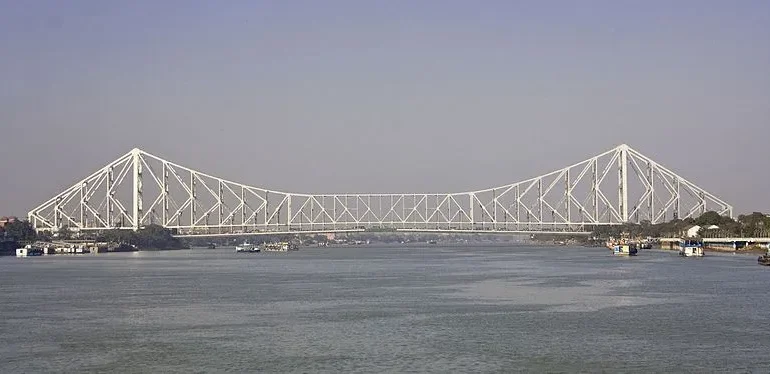
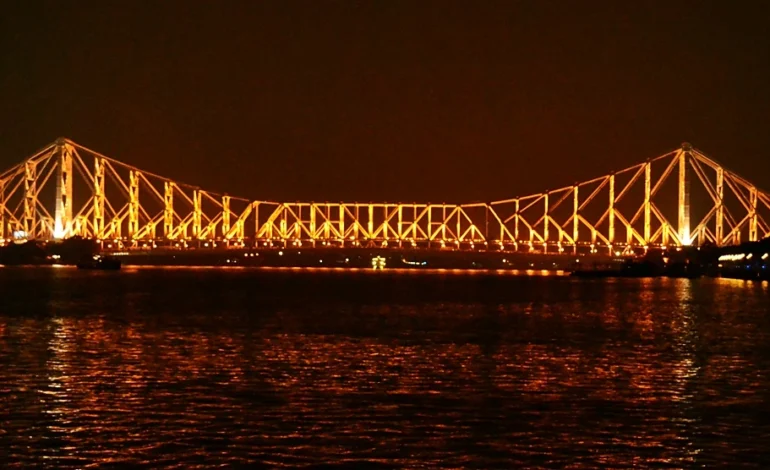
Howrah Bridge Kolkata Entry Fee
- No entry fee
Howrah Bridge Kolkata Timings
- Monday to Sunday 12:00 am – 12:00 am
Address: Kolkata, West Bengal 700001
Science City, Kolkata, located in West Bengal, India, is a prominent science centre and science park, currently the largest of its kind in the Indian subcontinent. The complex comprises a science museum, science park, and multiple auditoriums. Its inauguration occurred in two stages: the ‘Convention Centre Complex’ was opened first on December 21, 1996, followed by the remainder on July 1, 1997, under the auspices of then-Prime Minister Inder Kumar Gujral. Efforts to complete the second phase of Science City were initiated by then-Prime Minister Manmohan Singh on January 10, 2010.
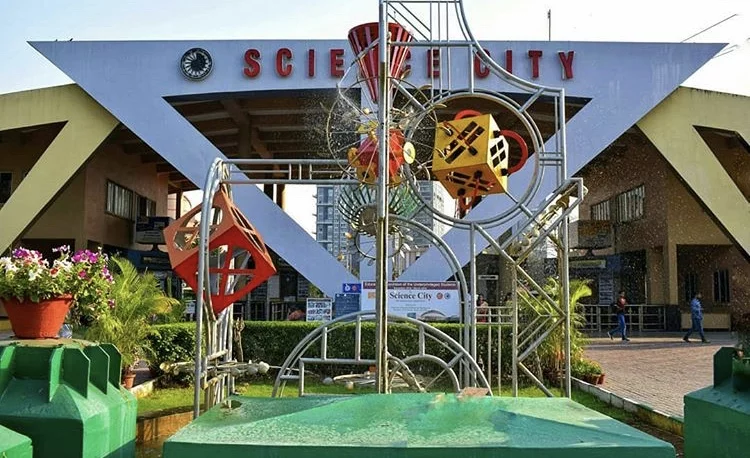

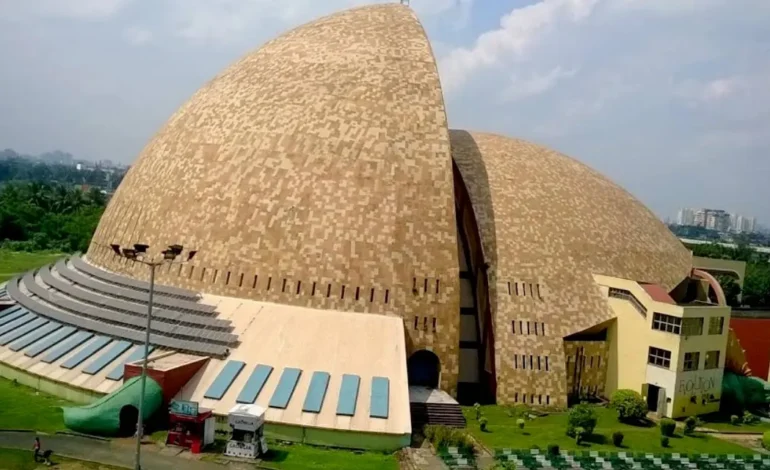
Science City Kolkata Entry Fee for General Visitors
| Entry | Rs. 65.00 per person |
| Evolution of Life – A Dark Ride | Rs 45.00 Per Person |
| PANORAMA ON ‘HUMAN EVOLUTION’ | Rs 60.00 Per Person |
| Combined Rates for ‘Dark Ride’ and ‘Human Evolution’: | Rs 85.00 Per Person |
| Science on a Sphere new | Rs 40.00 Per Person |
| Space Theatre 2D | Rs 80.00 Per Person |
| Space Theatre 3D | Rs 100.00 Per Person |
| 3D Show: | Rs. 30.00 Per Person |
| Time Machine: | Rs 40.00 Per Person |
| Road Train: | Rs. 25.00 Per Person |
| Ropeway: | Rs. 60.00 |
Science City Kolkata Entry Fee for Organized Group
Entry | Rs. 55.00 per person |
Space Theatre 2D | Rs 70.00 Per Person |
3D Show: | Rs. 25.00 Per Person |
Ropeway: | Rs. 48.00 Per Person |
Science City Kolkata Entry Fee for Organized School Groups
Entry | Rs. 30.00 per person |
Evolution of Life – A Dark Ride | Rs 40.00 Per Person |
PANORAMA ON ‘HUMAN EVOLUTION’ | Rs 60.00 Per Person |
Combined Rates for ‘Dark Ride’ and ‘Human Evolution’: | Rs 80.00 Per Person |
Science on a Sphere | Rs 40.00 Per Person |
Space Theatre: | Space Theatre is closed for upgradation |
3D Show: | Rs. 30.00 Per Person |
Ropeway: | Rs. 28.00 Per Person |
Science City Kolkata Entry Fee for Under Privileged Groups
Entry | Rs. 5.00 per person |
Science on a Sphere | Rs 5.00 Per Person |
Space Theatre: | Space Theatre is closed for upgradation |
3D Show: | Rs. 10.00 Per Person |
Ropeway: | Rs. 28.00 Per Person |
Address: JBS Haldane Ave, East Topsia, Topsia, Kolkata, West Bengal 700046
4. Indian Museum
The Indian Museum, situated in Calcutta, the former capital of British India, is the largest museum in India, established in 1814 by the Asiatic Society of Bengal. Dr. Nathaniel Wallich, a Danish botanist, served as the museum’s founding curator.
The Kolkata Museum is a renowned cultural and science institution encompassing six departments: Art, Archaeology, Anthropology, Geology, Zoology, and Economic Botany. Recognized as an Institution of National Importance under the Seventh Schedule of the Constitution of India, it holds the distinction of being one of the world’s oldest museums. Today, the museum operates under the management of the Ministry of Culture, Government of India.
The inception of the Asiatic Society of Bengal dates back to 1784, when it was founded by Sir William Jones. In 1796, members of the society resolved to create a museum to house both man-made artifacts and natural specimens. The museum’s foundation was laid in 1808, the same year the Government of India allocated land in the Chowrangi area for its construction.
On February 2, 1814, Dutch botanist Nathaniel Wallich, who had been taken captive during the Battle of Srirampur and subsequently released, advocated for the establishment of a museum in Calcutta. He proposed that the museum should encompass two main sections: one dedicated to archaeology, anthropology, and technology, and the other focusing on geology and zoology. Additionally, Wallich expressed his intention to contribute some of his own collections to the museum.
In 2009, the museum’s notable collections featured diverse artifacts such as an Egyptian mummy, a Buddhist stupa from Varhut, the Ashoka Pillar (India’s national symbol), fossils of prehistoric animals, various art pieces, rare antiquities, and geological rock specimens.
Also on display is a dinosaur model crafted by Bengali artist Surjit Das from the Geological Survey of India, alongside numerous other ancient artifacts housed within the museum.
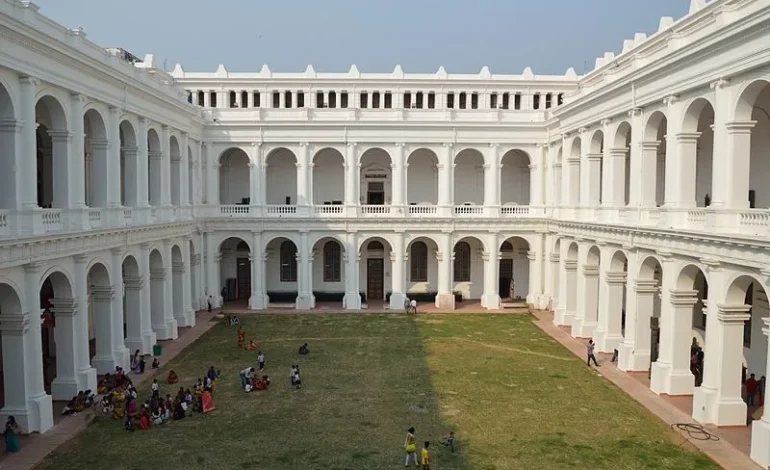
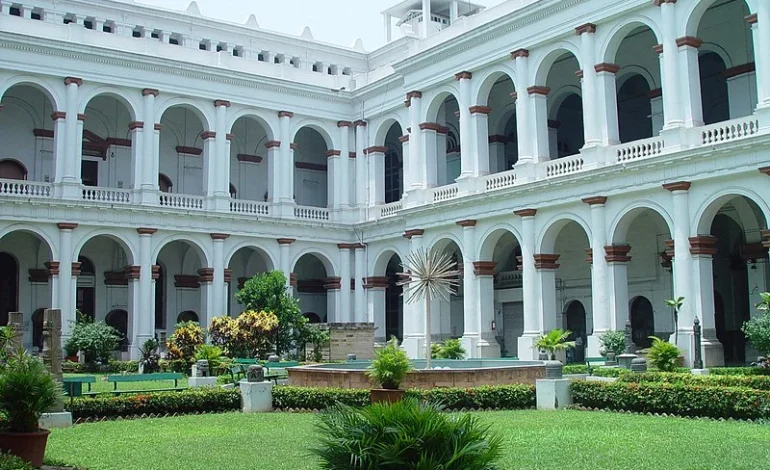


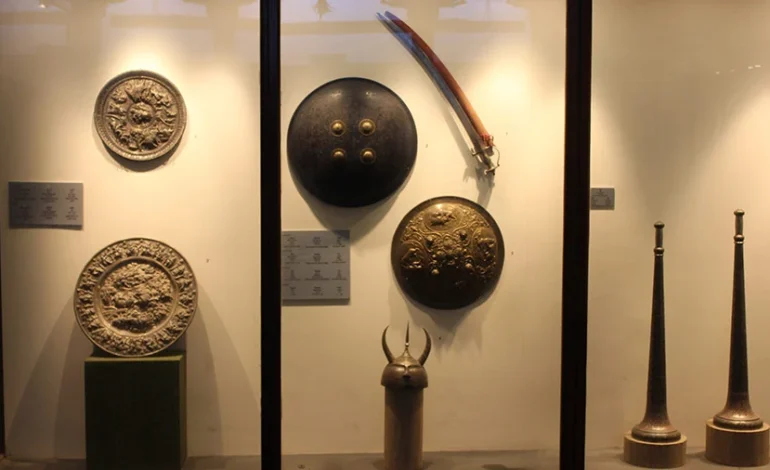
Indian Museum Kolkata Entry Fee
- ₹ 50 per person for Indian Adults
- ₹ 20 per person for Indian Children (Above 5 years of age)
- ₹ 500 per person for Foreign Tourists
Indian Museum Kolkata Camera Charges
- ₹ 50 for Smart Phone
- ₹ 100 for Still Camera
- ₹ 2000 for small Video Camera
- ₹ 5000 for Video Camera with Stand
Indian Museum Kolkata Timings
- Monday Close
- Tuesday to Friday 10:00 am – 6:30 pm
- Saturday & Sunday 10:00 am – 8:00 pm
Address: 27, Jawaharlal Nehru Rd, Fire Brigade Head Quarter, New Market Area, Dharmatala, Taltala, Kolkata, West Bengal 700016
5. Mother Teresa House
The Mother House of the Missionaries of Charity stands as a sacred destination for pilgrims seeking a deeper connection and purposeful existence. Founded by the Blessed Mother Teresa in 1950, its mission is rooted in selfless service to humanity, aiming to elevate troubled souls towards salvation. Following Mother Teresa’s passing in 1997, she was laid to rest in a humble tomb within the house where she lived and served. This simple site emanates a profound sense of benevolence and tranquility, evoking gratitude and peace in visitors’ hearts amidst the surrounding noise and bustle.
Adjacent to the building, a small museum titled ‘Mother Teresa’s Life, Spirit, and Message’ showcases personal relics such as Mother Teresa’s sandals, dinner-bowl, sari, crucifix, rosary, handwritten letters, and spiritual writings. The preserved ‘Mother’s room’ retains its simplicity, featuring a crown-of-thorns above her modest camp-bed.
Visitors can leave prayer petitions in the box at Mother Teresa’s Tomb during their visit, with all petitions being presented on the altar during the weekly Friday Mass as a gesture of reverence and supplication.
On October 7, 1950, Mother Teresa and a devoted group of followers founded the Missionaries of Charity with a commitment to wholehearted and free service to the most destitute. Their mission was to tend to the hungry, naked, homeless, crippled, blind, lepers, and all those deemed unwanted and unloved by society—individuals burdened and shunned by others.
After receiving Vatican approval to establish her own order, Mother Teresa established an institute initially known as the Diocesan Congregation of the Calcutta Diocese, beginning with a modest community of 12 members in Calcutta. Over time, it evolved into the renowned Missionaries of Charity.
In 1965, Pope Paul VI issued a Decree of Praise allowing Mother Teresa to expand her congregation globally. The Missionaries of Charity established their first international house in Venezuela, followed by locations in Rome, Tanzania, and subsequently across Asia, Africa, and Europe. By 1996, the congregation operated 517 missions in over 100 countries, supported by over one million co-workers and generous donations from around the world. Today, the society comprises over 4,500 sisters and maintains a presence in more than 133 countries.
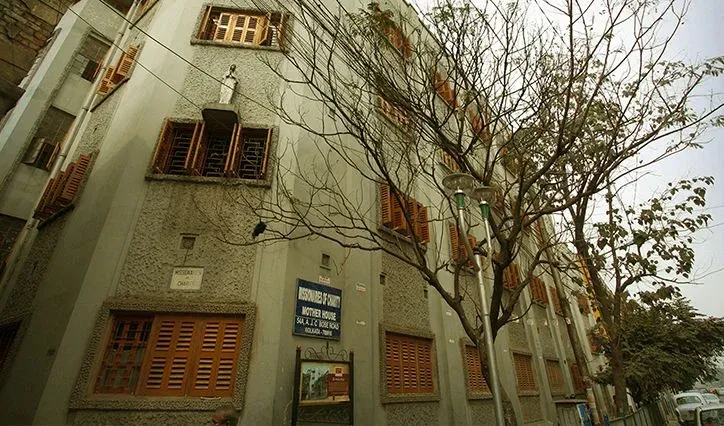
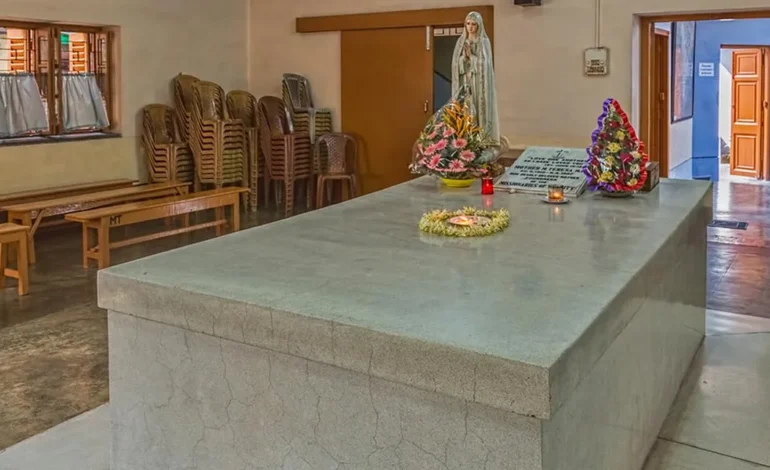
Mother House Kolkata Entry Fee
- No entry fee
Mother House Kolkata Timings
- Monday to Sunday 8:00 am – 12:00 pm to 3:00 pm – 6:00 pm
- Mother House remains closed on 22nd August, Easter Monday, and 26th December
Address: H937+7C5, Taltala, Kolkata, West Bengal 700014

